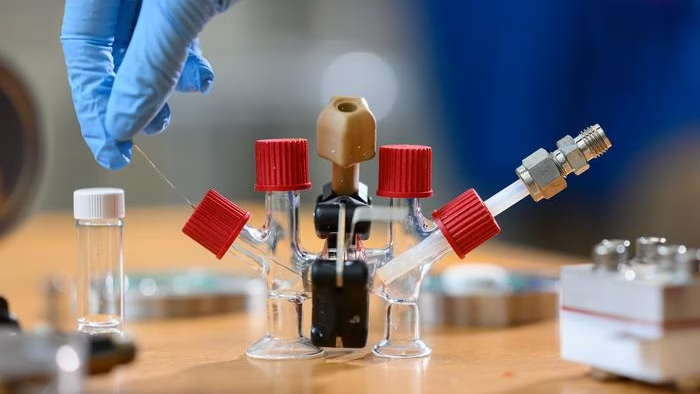By Charles Carter, 17/10/22
Australian startup Bombora has developed a pneumatic wave energy system called mWave comprising a series of giant whoopee cushion-like air sacs deployed under water.
They say their approach is less complex than other wave energy converters reducing cost and wave energy is more predictable than wind and solar.
The company began developing the technology in 2012 with their first prototype built in a farm shed in Australia using tractors to create waves in a test pool.
Investments include £3.54m from Japanese shipping firm Mitsui O.S.K. Lines earlier this year and £10.3m from the EU and Welsh Government in 2018 to commercialise their tech from an ops centre in Wales.
How does it work?
Metal concave capsules are covered on one side with a rubber membrane which is pushed down when the water pressure increases as waves pass overhead.
Pressued air is pushed out of the capsules and through a unidirectional turbine and off-the shelf variable-speed generator producing electricity conveyed to the local grid through a subsea cable.
Air is drawn back into the capsules when the water pressure decreases and the process starts again with the next wave.
The capsules are either mounted on a metal foundation attached to the seabed or on a semi-submerged floating platform for deep sea deployments.
The company is currently onshore-testing a 900 tonne 1.5MW mWave ready for deployment 10m below the surface off the Pembrokeshire coast in Wales. It is set to be the world’s most powerful wave energy converter.
They also have plans for the demonstration of an 18MW integrated floating wave and wind platform through the InSPIRE project with UK energy projects company TechnipFMC and other partners. They are aiming for a competitive Levelised Cost of Energy of €50 per megawatt hour by 2030.
What are the potential benefits?
The mWave has no external moving parts aside from the rubber membrane which could help to reduce maintenance costs compared with other wave converter systems.
Also, as the seabed version is tucked away beneath the surface, this mitigates visual impact issues especially for near-shore deployments. And this could make it more resistant to storm damage.
Questions for you. Comment below
- First thought that comes into your head?
- Pros and cons according to you?
- Other applications of this approach?
- What could this be combined with?
Links
https://www.inspireoffshoreenergy.com/




Thank you for your sharing. I am worried that I lack creative ideas. It is your article that makes me full of hope. Thank you. But, I have a question, can you help me?
I don’t think the title of your article matches the content lol. Just kidding, mainly because I had some doubts after reading the article.
Your article helped me a lot, is there any more related content? Thanks!